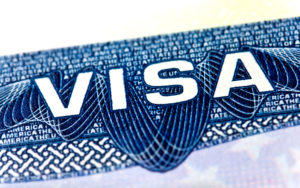Gender-Neutral Passports
Non-binary, intersex, and gender non-conforming Americans can now obtain gender-neutral passports and Consular Reports of Birth Abroad (CRBAs) with an X gender marker. Previously, the State Department had announced that applicants would be able to self-select their gender “as ‘M’ or ‘F,'” irrespective of the gender specified in other identity documents, and without a need for medical certification.
According to Jessica Stern, U.S. Special Envoy to Advance the Human Rights of Lesbian, Gay, Bisexual, Transgender, Queer and Intersex (LGBTQI+) Persons, “when a person obtains identity documents that reflect their true identity, they live with greater dignity and respect.” Stern also hoped that the State Department’s step would “help inspire other governments to offer the option.”
Countries With Third Gender Options on Passports
To be sure, the United States is not the first country to offer gender-neutral passports. Argentina, Australia, Canada, Nepal, and the Netherlands are some of the countries that already provided a third gender option on their passports (usually X, but not always; Nepal uses an O marker). Nevertheless, the State Department’s move is still, as Stern noted, historic, constituting as clear a policy statement as the U.S. government can make on the issue of gender diversity.
Far from being a message directed at national audiences only, the State Department’s actions constitute an act of foreign policy. In essence, a passport is a formal communication between governments, requesting safe passage and assistance for their citizens. This is underscored by the fact that passports, at least in the case of the United States, are government property that must be returned on demand (22 CFR § 51.9). Consequently, the nonbinary gender choice being made by Americans who select X is one supported by the United States.
Difficulties When Using an X Passport for Overseas Travel
Despite this strong signal, however, Americans may encounter difficulties when using an X passport for overseas travel. Authorities in countries hostile to transgender rights may subject holders of such passports to harassment, and in some extreme cases may refuse to recognize the passports as valid. Problems could arise as well if the passport holder has previously traveled to that country using travel documents that specify a different gender.
Back when Canada rolled out its gender-neutral passports in 2017, Canadian immigration lawyer Adrienne Smith warned about these risks:
‘I’m really worried that in countries like Uganda and Jamaica, where being LGBT is illegal and there’s laws on the books that prosecute people for identifying as trans, that this could leave people open to arbitrary detention, it could leave them open to scrutiny at airports, degrading treatment,’ said Smith. ‘There’s a whole host of actions that foreign law enforcement could take, I think, if you have an X on your passport.’
In other countries, hostile intent may be absent, but as a practical matter systems may not be designed to accept X gender designations. Online visa application forms or software used for immigration clearance might require a binary gender choice. Ham-fisted efforts by officials to find workarounds may result in uncomfortable situations.
It is also important to keep in mind that treatment within a country could vary. Aware of developments in places like the United States, immigration authorities may come up with procedures for visitors with X passports, ensuring a hassle-free arrival. However, there may be divergences between ports of entry: Officers at major international airports are likely to have far more exposure to gender-neutral passports than those at land crossings that mostly see local traffic. Moreover, some government officials may not have regular contact with foreign passport holders, and as a result be unaware of relevant directives. The same is true of private actors such as hotel clerks and mobile phone vendors.
Even in countries that issue gender-neutral passports, there is some potential for complications. Information provided on passports, including gender, serves primarily to identify holders. In some instances, the use of an X gender marker could complicate identification efforts by authorities. As noted at the time Canada instituted its changes by Aaron Devor, chair in transgender studies at the University of Victoria,
We have a lot of people who are travelling where their official sex designation according to their birth certificate and so on doesn’t match their appearance. So that immediately creates problems at borders because people are looking to see a concordance between what the passport says, what the picture says, what the person’s appearance says and what the sex designation is.
Back when I was a U.S. consular officer, I had to run the names of visa applicants through databases containing criminal records and other derogatory information. In case of a hit, I would attempt to establish that the applicant was not the same person that came up during the search. However, when information such as date of birth or gender was missing, it was impossible to rule out a match, requiring a referral to Washington. Unfortunately, X passport holders will face a heightened risk of getting tangled up in such scenarios, with possible adverse consequences.
Similarly, records of previous visits using travel documents showing a different gender may give rise to confusion on the part of immigration officers, in turn leading to probing questioning that may discomfort some travelers.
The new gender-neutral passport rules are without doubt an important milestone, which will further spur our ongoing national conversation on gender diversity. For now, however, travelers availing themselves of X passports should be mindful of the possible issues they may face overseas.

























